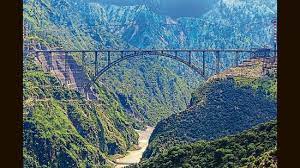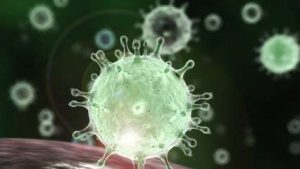Today Current Affairs: 17th August 2022 for UPSC IAS exams, State PSC exams, SSC CGL, State SSC, RRB, Railways, Banking Exam & IBPS, etc
Table of Contents
World Population Prospectus Report 2022:

The world population prospectus report 2022 was released last month.
Findings:
- India is at the 3rd stage of the demographic transition (DT).
- India is experiencing a slowing population growth rate due to constant low mortalityand rapidly declining fertility.
- Its population growth is further expected to fall to 1% by 2025.
- Many States have not achieved a low TFR (e.g. Bihar, UP): The reasons being high illiteracy levels, rampant child marriage, and low contraceptive usage compared to other states.
- The total fertility rate of a population is the average number of children that would be born to a woman over her lifetime
- Male-dominant sex ratio: It is 943 females per 1,000 males (2011). Reason being- preference for sons and sex selection (both pre-and post-natal)
- Marriage squeeze: Not many girls are available in comparison to boys, leading to an instance of bride purchase.
- Elderly population: It is now increasing and is expected to be 12% by 2050 (from above 9% now).
150th Birth Anniversary Of Shri Aurobindo Ghosh:

To commemorate the 150th birth anniversary of Shri Aurobindo Ghosh, the central government is holding spiritual programmes from August 12 to August 15, 2022, across 75 prisons in India.
About Sri Aurobindo:
- In Pondichéry he founded a community of spiritual seekers, which took shape as the Sri Aurobindo Ashram in 1926.
- Helped establish the Anushilan Samiti of Calcutta in 1902.
- He and his brother revolutionary Barin Ghose contributed articles to the magazine Jugantar
- He was also a journalist, editing newspapers such as Bande Mataram.
- In 1914, he started publishing the magazine, Arya.
- In May 1908, Aurobindo was arrested in connection with the Alipore Conspiracy Case.
- He wrote copiously and his greatest literary achievement was ‘Savitri’, an epic poem with about 24000 lines.
- He developed a kind of Yoga called Integral Yoga.
- His theory of Nationalism: Sri Aurobindo Ghosh was considered a prophet of Indian nationalism.
- Along with Bankimchandra, Tilak and Dayanand, he developed the theory of nationalism in India (based on Vedanta Philosophy)
- He declared that India was in fact Mother India which represented the united power and Shakti of millions of her children. Mother India represented the infinite energy of her people:
Bal Aadhaar Initiative:

Over 7.9 million children aged up to five were enrolled under the Unique Identification Authority’s Bal Aadhaar initiative from April to July.
- The Bal Aadhaar, a precursor to a standard Aadhaar, is issued in blue colour to children aged up to five. Upon expiration, a regular Aadhaar is issued.
- Bal Aadhaar works as a facilitator in availing several welfare benefits, and also works as a digital photo identity for children.
- Biometrics to establish uniqueness for the Bal Aadhar is not collected unlike in the case of Aadhaar.
- A facial image of a child is instead taken for enrolment.
- Biometric authentication of the parent/guardian and a proof of relationship document, preferably a birth certificate, are collected at the time of enrolment.
- CAG criticism of Bal Aadhar: The audit was also critical of UIDAI’s move to issue Aadhaar cards to children and newborns without biometrics under an initiative known as Bal Aadhaar.
- This needs to be reviewed because anyway after 5 years, a child has to apply for a new regular Aadhar.
Manual Scavengers Enumeration Exercise:

The Ministry of Social Justice and Empowerment (MoSJ&E) is preparing to undertake a nationwide survey to enumerate all Sanitation workers engaged in cleaning of sewers and septic tanks.
- The enumeration exercise is part of the National Action Plan for Mechanised Sanitation Ecosystem (NAMASTE) Scheme and will be conducted across 500 AMRUT (Atal Mission for Rejuvenation and Urban Transformation) cities.
- It will merge with and replace the Self-Employment Scheme for the Rehabilitation of Manual Scavengers (SRMS), which was started in 2007.
- Programme Monitoring Units (PMUs) for the 500 AMRUT cities will be set up to carry out the exercise.
- Once this exercise is completed across the 500 cities, it will be expanded nationwide, making it easier to bring government benefits like upskilling and loan and capital subsidies to them.
- Manual Scavenging has led to at least 351 deaths since 2017.
- It is aimed at streamlining the process of rehabilitating sanitation workers.
- It will make it easier to bring government benefits like upskilling and loan and capital subsidies to them.
- To link listed sanitation workers to the Swaachha Udyami Yojana, through which the workers will be able to own sanitation machines themselves and the government will ensure that at the municipality level, the work keeps coming in.
- Swaachha Udyami Yojana has twin objectives of cleanliness and providing livelihood to Safai Karamcharis and liberated Manual Scavengers to achieve the overall goal of “Swachh Bharat Abhiyan”.
Manual Scavenging:
- Manual scavenging is defined as “the removal of human excrement from public streets and dry latrines, cleaning septic tanks, gutters and sewers”.
- India banned the practice under the Prohibition of Employment as Manual Scavengers and their Rehabilitation Act, 2013 (PEMSR).
- The Act bans the use of any individual manually cleaning, carrying, disposing of or otherwise handling in any manner human excreta till its disposal.
- The Act recognizes manual scavenging as a “dehumanizing practice.
Review Of Guardianship And Adoption Laws:

The Parliamentary Standing Committee on Personnel, Public Grievances and Law and Justice tabled a report “Review of Guardianship and Adoption Laws” in Parliament and recommended district-level surveys to identify orphaned and abandoned children.
- In India, there are only 2,430 children available for adoption while the number of parents desiring to bring home a child is growing rapidly.
Key Findings of the Report:
- There were 27,939 prospective parents registered with the Child Adoption Resource Authority (CARA) as of December 2021, up from nearly 18,000 in 2017.
- CARA, a statutory body of the Ministry of Women & Child Development, functions as the nodal body for adoption of Indian children and is mandated to monitor and regulate in-country and inter-country adoptions.
- There was a total of 6,996 orphaned, abandoned and surrendered children residing in childcare institutions considered adoptable, only 2,430 were declared “legally free” for adoption by Child Welfare Committees.
- There are only 2,430 children found to be legally free for adoption in India with an estimated 3.1 crore orphans because of the failure to bring more children in need of care into the government’s safety net.
- The waiting time for adoption has increased to three years from one year in the past five years.
- The total number of children adopted in 2021-2022 was only 3,175.
Navroz Or The Parsi New Year:

On August 16, 2022, Navroz or the Parsi New Year is being celebrated
- It is the most widely celebrated festival of the Parsi community.
- This is seen as a harbinger of peace and prosperity.
- In Mumbai and its suburbs, which host a considerable population of Parsi community, the festival is celebrated with grand lunch and dinner with the best and finest variety of Parsi cuisine.
- Parisis see this festival as the great occasion to get together, eat and mingle.
- On this day, the Parsis visit the Agyaris or the fire temples to offer prayers.
- They feed the poor on this day, as the new year has to start on a good note.
Advanced Towed Artillery Gun System (ATAGS):

On Independence Day, ATAG, an indigenously developed howitzer, became part of a 21-gun salute at the Red Fort.
- The ATAGS is an indigenous 155 mm x 52 calibre howitzer gun.
- Howitzers is an umbrella term for a category of long-range artillery guns.
- It is developed by the Defence Research and Development Organisation (DRDO) with its Pune-based facility Armament Research and Development Establishment (ARDE) being the nodal agency.
- The ATAGS project was started in 2013 by DRDO to replace older guns in service in the Indian Army with a modern 155 mm artillery gun.
- The armament system of ATAGS mainly comprises barrel, breech mechanism, muzzle brake and recoil mechanism to fire 155 mm calibre ammunition held by Army with a longer range, accuracy and precision and provides greater firepower.
- The ATAGS is configured with all electric drive to ensure maintenance free and reliable operation over a longer period of time.
- It has advanced features in terms of high mobility, quick deployability, auxiliary power mode, advanced communication system, automatic command and control system with night firing capability in the direct fire mode.
- The specialised gun system is compatible with C4I (command, control, communications, computers, and intelligence) systems like the Artillery Combat Command and Control System (ACCCS) called Shakti for technical fire control, fire planning, deployment management, and operational logistics management of the Army.
Postal Identification Number:

The 75th Independence Day coincides with another milestone in the country’s history — it was on August 15, 1972, that the Postal Identification Number (PIN) was introduced in India. As the PIN code turns, we look at its history and evolution.
- According to the Department of Posts, there were 23,344 post offices, primarily in urban areas, in India at the time of Independence.
- But, the country was growing rapidly and the postal network had to keep pace.
- The PIN code was meant to ease the process of mail sorting and delivery in a country where different places, often, have the same or similar names, and letters are written in a wide variety of languages.
- The PIN is made up of six digits.
- The first number indicates the postal region — Northern, Eastern, Western, Southern; and number 9, which signifies the Army Postal Service.
- The second number denotes a sub-region, and the third represents the sorting district.
- The remaining numbers narrow the geography further to the specific post office making the delivery.
Golden Joint Of Chenab Railway Bridge:

The ‘Golden Joint’ of Chenab Railway bridge was inaugurated on August 13, 2022. It was decked with the National flag to celebrate the “Azadi ka Amrit Mahotsav”.
- It is the highest railway bridge in the world.
- It is located in Reasi district of Jammu and Kashmir.
About the Chenab Rail Bridge:
- It is constructed between Bakkal and Kauri in Reasi district of Jammu and Kashmir.
- It has been built on Chenab River, at a height of 359 m.
- It is world’s highest rail bridge.
- Both ends of the bridge has been connected with the help of High Strength Friction Grip (HSFG) bolts.
- It is marked as the ‘golden joint’.
- This rail link project is known as ‘Udhampur-Srinagar-Baramulla Rail Link Project’.
- It has used around 30,350 tonnes of steel, including 10,620 tonnes to construct the gigantic arch and 14,500 tonnes to construct bridge deck.
- It has been constructed near Kauri village upstream of Salal Dam.
1st Country To Approve Omicron Vaccine : UK

The United Kingdom has authorized the first ever covid-19 vaccine for Omicron variant. It is the first country to do so. Authorization of vaccine will now pave ways for autumn booster campaign using two-strain shot of Moderna.
- Conditional authorisation for the vaccine was granted by “Medicines and Healthcare products Regulatory Authority”.
- It was also the first authority worldwide, to approve the original Covid-19 vaccine.
- Authorized vaccine caters to original as well as Omicron BA.1 strain of the coronavirus.
- It has been authorised for use among people aged above 18.
- Now UK will focus on its booster programme for people aged over 50 and who are highly vulnerable to developing Covid.
Omicron Variant: Omicron B.1.1.529 is a variant of SARS-CoV-2.




